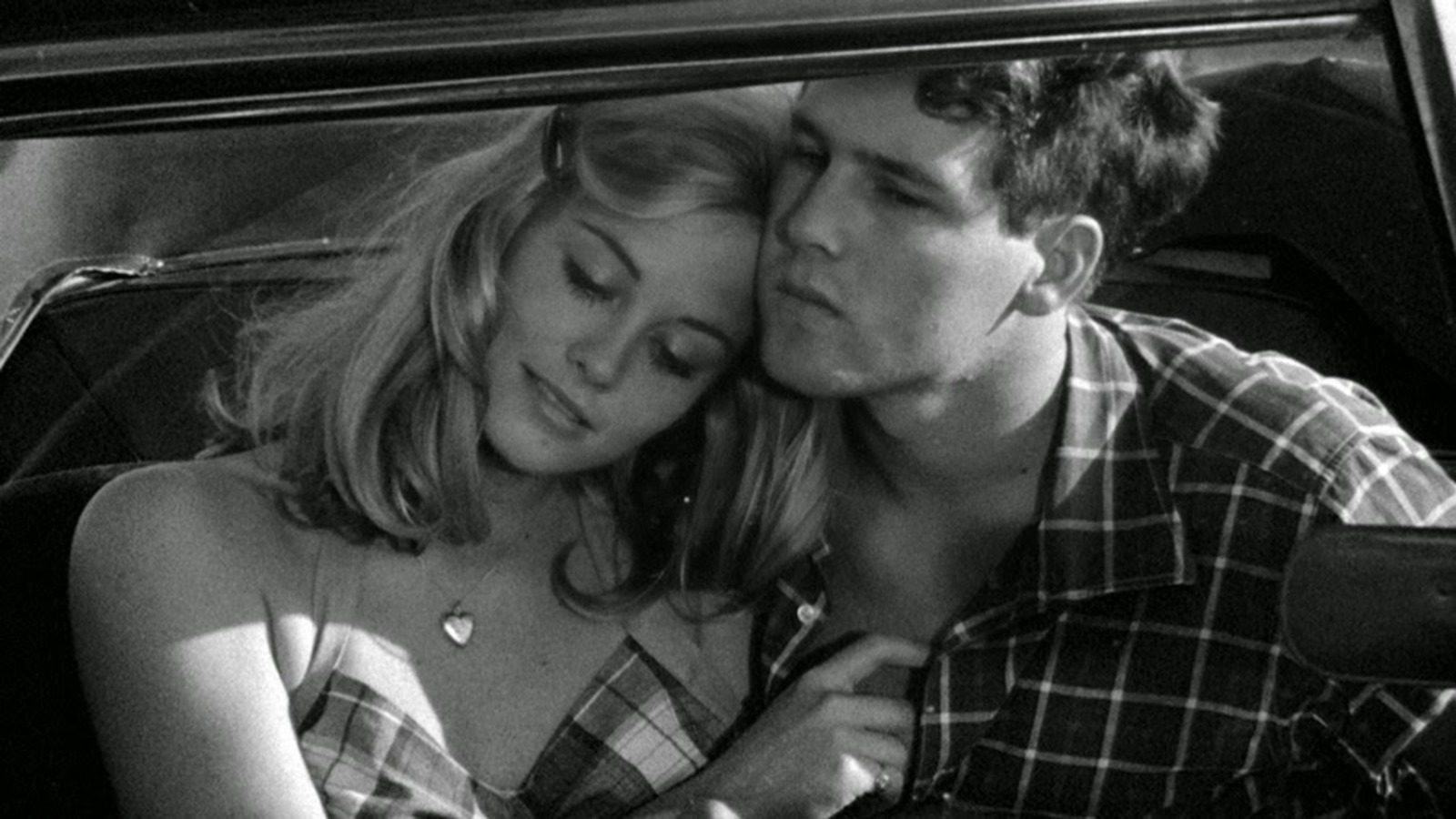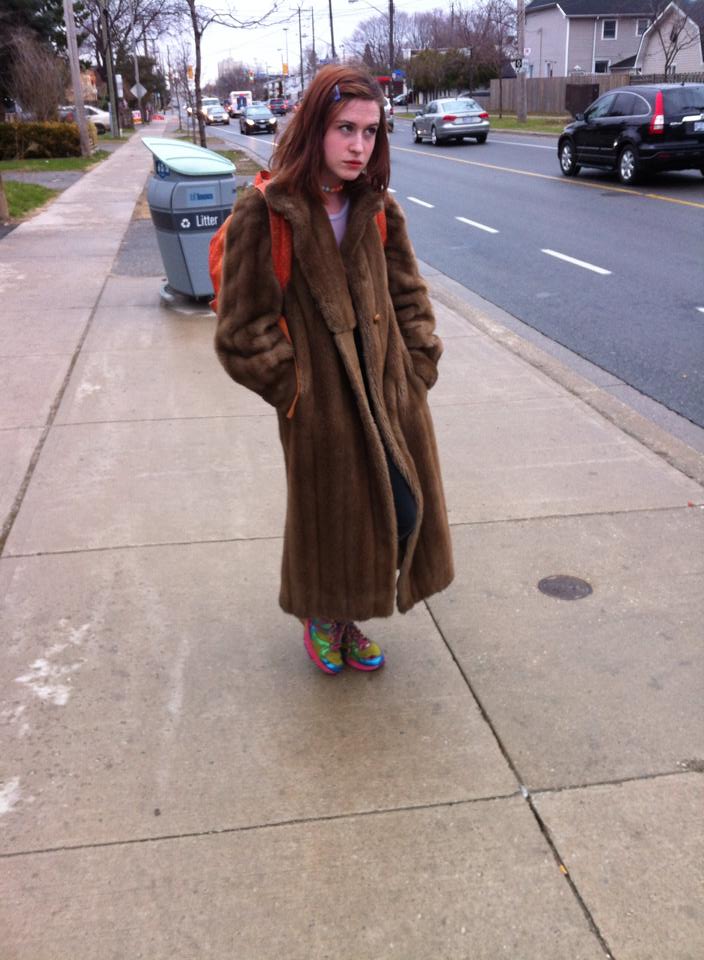My Problematic Fave: A juicy question with many answers: Catherine Breillat. Dollarama. Nina Simone's version of "I Loves You, Porgy" (it's not on Simone, she saves it from Gershwin, it's just the one I love). I would say Woody Allen's Husbands and Wives or Deconstructing Harry, but I think it's okay to enjoy those (so bleak and revealing, they are basically a confession), it's more problematic that I love Manhattan.
First Movie I went on a Date for: Sweet Home Alabama, a double date with my neighbourhood friend and two guys from another school we met hanging out (as teens do) after school hours at the playground. He thought I was crying during an emotional scene where Reese Witherspoon visits a grave in her hometown (A grandparent? Childhood dog?), but I was a cynical 14-year-old, and not then or now a Rom Com girl, and was trying to muffle my laughter.
My Movie/TV Character Style Icon: Julia Stiles in Hamlet, Kiera Knightley in Love, Actually, Satine in Moulin Rouge, Maggie Cheung and Nathalie Richard in Irma Vep.
The First Sex Scene I Ever Saw: I can't remember for sure, but probably Titanic.
… and it made me feel: Confused: it gave me absolutely no information on what sex actually is, only that there were certain signals I would one day understand (like the men who laugh knowingly when they see the fogged up windows). Also afraid: it seemed sex would always leave some trace, and you could not hide it from anyone. Also romantic: sex was fun and actually fine, no one was hurt by it or punished for it (although it did happen right before they hit the iceberg, but this was not a coincidence that my young mind internalized.)
Best Needle Drop: Most of the songs in Rushmore (but maybe "Oo La La" by The Faces the most). I didn't even know what those songs were when I watched it at 15, but I knew that they were perfect.
I Wish this Fictional Meal Existed IRL: This meal does exist, but I have never seen the timpano from Big Night out in the wild, and although it seems like something that is better in theory than in execution, I'm not sure I'll feel fully satisfied if I never try one.
Untouchable Classic that I hate: How do I even pick! Citizen Kane does very little for me (except Welles, who I find quite hot), 2001: A Space Odyssey is glacial and so British (I do think the scene approaching the monolith on the moon is fab), Bresson leaves me dry (a symptom, perhaps, of him casting actors because they're hot), I find Parasite shallow, I only like the scenes in Stalker before and after they go to the Zone, and I can't get past Jeanne Dielman's melodramatic ending (which became an irritating staple of art house film).
Celebrity I had on my wall as a teen
Frank Black Francis and Karen O.
My film/TV OTP is: I can't think of a time when I felt the ending of a film or show should have been different, I like when characters come together, I like when they fall apart.
The Reality TV Show I Would Win: I think it's obvious that my true place is not as a competitor, but as a judge.
In last year's dark horse for song of the summer, “Diet Pepsi”, Addison Rae paints a simple but evocative picture. Over a backing track that sounds like the sonic lovechild of Britney Spears and Lana Del Rey, she details a hookup with a hot guy in his car. The song’s chorus, “When we drive in your car, I’m your baby. Losing all my innocence in the back seat,” is straight to the point and yet its imagery is so loaded with nostalgia that listeners have no choice but to regress into their adolescent selves. At least that’s been my experience. Except, there’s a marked difference between my actual youth and the one that Addison Rae leaves me yearning for. I grew up downtown, and my teen years were spent emptying my pockets for bus change, not fooling around in cars. I don’t even think I had so much as a kiss in the front seat. Yet when I hear “Diet Pepsi”, I’m still brought back to the good ol’ days—it’s just that those good ol’ days weren’t my own. I lived them by proxy through teen movies, where the car is a time-honoured motif for the transitional nature of young adulthood.
Adolescence is marked by both a lack of access to third spaces and the development of interests that can’t be fulfilled in the home. And so, as Addison Rae suggests, one of the most common uses for cars in the coming-of-age genre is getting it on. In Tamara Jenkins’ Slums of Beverly Hills (1998), fourteen-year-old Vivian (Natasha Lyonne) is forced to endure the onset of puberty while living in tight quarters with her aging father and two brothers. The nomadic family bounces between tiny apartments until they’ve overstayed their welcome, leaving little space to grow. This forces Vivian to explore her sexuality in a number of inconvenient spaces (their building’s laundry room, the bathroom floor) until finally she loses all her innocence in the backseat (of a baby blue convertible to a guy in a Charles Manson T-shirt.) The car offers Vivian, who can’t even wear a halter top without inappropriate comments from her family, the chance to be a teenager in peace.

This is similarly, and much more literally, the case in the ill-fated Britney Spears star-vehicle Crossroads (2002). Penned by prime-time soap mogul Shonda Rhimes, Crossroads reads like an adaptation of Chicken Soup For The Teenage Soul. And yet, its melodramatic sentimentality is surprisingly touching. The film tells the story of three former besties reuniting for a road trip after high school graduation. When they first hit the road, the three young women are confident that they’re ready for the adult world. However, they soon learn they’re in over their heads. Britney puts it aptly in the film’s climax when she sings the song “I’m Not A Girl, Not Yet A Woman”. The road trip offers them an opportunity to exist in that transitional space: the further they drive, the more each girl comes out of her shell. Blasting Shania Twain with the top down, we see them having fun for what looks like the first time in years.
Where Crossroads is essentially an after-school special about prioritizing the journey over the destination, Dazed and Confused (1993) is a rejection of the very idea of a destination at all. This notion is reiterated by a number of characters throughout the film, most prominently during an exchange between its trio of nerds. Realizing they have no plans on the last night of school other than aimlessly driving around, Cynthia (Marissa Ribisi) asks, “If we’re all gonna die anyways, shouldn’t we be enjoying ourselves now? I’d like to stop thinking of the present, right now, as some minor, insignificant preamble to something else,” to which her friend Mike (Adam Goldberg) responds “Exactly that’s what everybody in this car needs, is some good ol’ worthwhile visceral experience.” And that’s exactly what they get, once they stop bemoaning a night of cruising, open themselves up to spontaneity, and just keep L-I-V-I-N’.

Among its many references, the music video for “Diet Pepsi” pays homage to Peter Bogdanovich's The Last Picture Show (1971), with Rae styled to resemble local teen sex kitten Jacy (Cybill Shepherd). The dying Texas town at the center of the film has run a toll on its residents who exist in a state of arrested development. The characters in The Last Picture Show rely on their cars for all the above reasons—hooking up, escapism, aimless drifting—but with much darker implications. The teens of the film neck each other in their cars, but can’t get past second base. Instead, they’re seduced by their adult neighbours into spaces from which they should be barred. Each attempt to drive out of the town is either thwarted or ends in tragedy. And when they cruise around, it’s less for fun and more because their only other option is to watch tumbleweeds roll by. “Diet Pepsi” sheds the bleaker elements of its source material. Yet it isn’t far off from the romantic way that the tragically stunted adults of The Last Picture Show reminisce on their own youths—with the nostalgic precision of a finely edited music video.
All of the films I’ve listed are set in California or Texas, two places where a driver's license is an essential means of survival, literally but, more than that, spiritually. For one, their ascension into adulthood is dependent on their access to mobility. But also, for their characters who lament endlessly about “getting out of this place”, it offers momentary respite and the promise of somewhere new. I’m grateful to have spent my youth in a big city, privileged by the relative freedom of a somewhat dependable public transit system and a late curfew. But I also feel robbed of what the movies taught me was a quintessential life experience. There is no greater motif in the teen film than the automobile, no better metaphor for the liminal space that is adolescence.
In last year's dark horse for song of the summer, “Diet Pepsi”, Addison Rae paints a simple but evocative picture. Over a backing track that sounds like the sonic lovechild of Britney Spears and Lana Del Rey, she details a hookup with a hot guy in his car. The song’s chorus, “When we drive in your car, I’m your baby. Losing all my innocence in the back seat,” is straight to the point and yet its imagery is so loaded with nostalgia that listeners have no choice but to regress into their adolescent selves. At least that’s been my experience. Except, there’s a marked difference between my actual youth and the one that Addison Rae leaves me yearning for. I grew up downtown, and my teen years were spent emptying my pockets for bus change, not fooling around in cars. I don’t even think I had so much as a kiss in the front seat. Yet when I hear “Diet Pepsi”, I’m still brought back to the good ol’ days—it’s just that those good ol’ days weren’t my own. I lived them by proxy through teen movies, where the car is a time-honoured motif for the transitional nature of young adulthood.
Adolescence is marked by both a lack of access to third spaces and the development of interests that can’t be fulfilled in the home. And so, as Addison Rae suggests, one of the most common uses for cars in the coming-of-age genre is getting it on. In Tamara Jenkins’ Slums of Beverly Hills (1998), fourteen-year-old Vivian (Natasha Lyonne) is forced to endure the onset of puberty while living in tight quarters with her aging father and two brothers. The nomadic family bounces between tiny apartments until they’ve overstayed their welcome, leaving little space to grow. This forces Vivian to explore her sexuality in a number of inconvenient spaces (their building’s laundry room, the bathroom floor) until finally she loses all her innocence in the backseat (of a baby blue convertible to a guy in a Charles Manson T-shirt.) The car offers Vivian, who can’t even wear a halter top without inappropriate comments from her family, the chance to be a teenager in peace.

This is similarly, and much more literally, the case in the ill-fated Britney Spears star-vehicle Crossroads (2002). Penned by prime-time soap mogul Shonda Rhimes, Crossroads reads like an adaptation of Chicken Soup For The Teenage Soul. And yet, its melodramatic sentimentality is surprisingly touching. The film tells the story of three former besties reuniting for a road trip after high school graduation. When they first hit the road, the three young women are confident that they’re ready for the adult world. However, they soon learn they’re in over their heads. Britney puts it aptly in the film’s climax when she sings the song “I’m Not A Girl, Not Yet A Woman”. The road trip offers them an opportunity to exist in that transitional space: the further they drive, the more each girl comes out of her shell. Blasting Shania Twain with the top down, we see them having fun for what looks like the first time in years.
Where Crossroads is essentially an after-school special about prioritizing the journey over the destination, Dazed and Confused (1993) is a rejection of the very idea of a destination at all. This notion is reiterated by a number of characters throughout the film, most prominently during an exchange between its trio of nerds. Realizing they have no plans on the last night of school other than aimlessly driving around, Cynthia (Marissa Ribisi) asks, “If we’re all gonna die anyways, shouldn’t we be enjoying ourselves now? I’d like to stop thinking of the present, right now, as some minor, insignificant preamble to something else,” to which her friend Mike (Adam Goldberg) responds “Exactly that’s what everybody in this car needs, is some good ol’ worthwhile visceral experience.” And that’s exactly what they get, once they stop bemoaning a night of cruising, open themselves up to spontaneity, and just keep L-I-V-I-N’.

Among its many references, the music video for “Diet Pepsi” pays homage to Peter Bogdanovich's The Last Picture Show (1971), with Rae styled to resemble local teen sex kitten Jacy (Cybill Shepherd). The dying Texas town at the center of the film has run a toll on its residents who exist in a state of arrested development. The characters in The Last Picture Show rely on their cars for all the above reasons—hooking up, escapism, aimless drifting—but with much darker implications. The teens of the film neck each other in their cars, but can’t get past second base. Instead, they’re seduced by their adult neighbours into spaces from which they should be barred. Each attempt to drive out of the town is either thwarted or ends in tragedy. And when they cruise around, it’s less for fun and more because their only other option is to watch tumbleweeds roll by. “Diet Pepsi” sheds the bleaker elements of its source material. Yet it isn’t far off from the romantic way that the tragically stunted adults of The Last Picture Show reminisce on their own youths—with the nostalgic precision of a finely edited music video.
All of the films I’ve listed are set in California or Texas, two places where a driver's license is an essential means of survival, literally but, more than that, spiritually. For one, their ascension into adulthood is dependent on their access to mobility. But also, for their characters who lament endlessly about “getting out of this place”, it offers momentary respite and the promise of somewhere new. I’m grateful to have spent my youth in a big city, privileged by the relative freedom of a somewhat dependable public transit system and a late curfew. But I also feel robbed of what the movies taught me was a quintessential life experience. There is no greater motif in the teen film than the automobile, no better metaphor for the liminal space that is adolescence.



